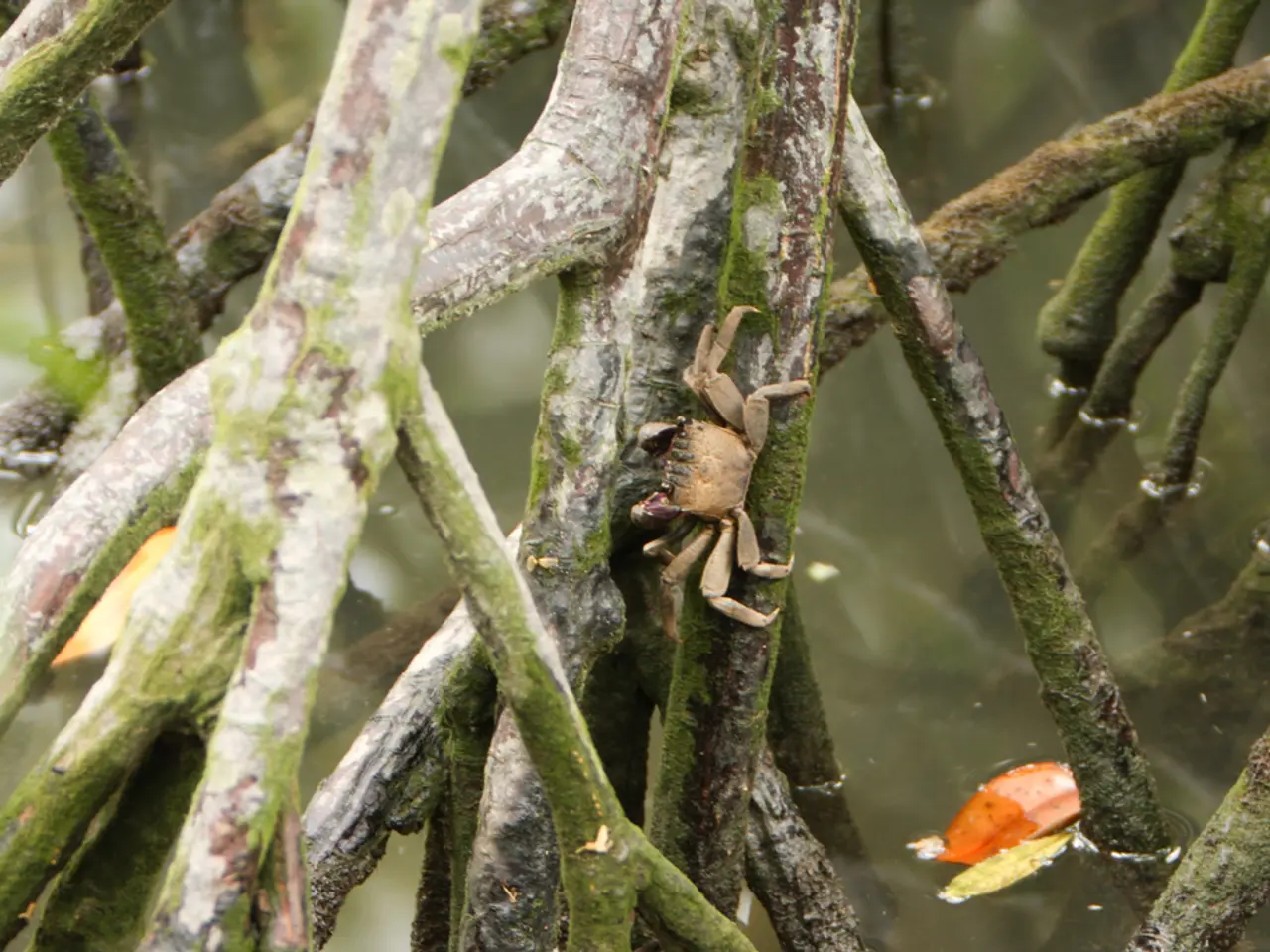Hundreds of horseshoe crabs discovered deceased in Rio Lagartos, Yucatan
In the picturesque Ria Lagartos Biosphere Reserve, Yucatán, Mexico, an alarming event has unfolded. A significant number of horseshoe crabs, a crucial species in coastal ecosystems, have been found dead. The cause of this mass death is currently under investigation, but several factors are suspected.
The collected samples are being analyzed in the laboratory, and preliminary findings suggest that environmental pollution, climate change, habitat loss, disease, and human interference may be contributing factors.
**Environmental Pollution**
Chemical contaminants from agricultural runoff, pesticides, and industrial waste can degrade water quality, affecting horseshoe crab physiology and reproductive health, leading to increased mortality.
**Climate Change and Temperature Stress**
Rising water temperatures and extreme weather events can stress horseshoe crabs, altering their habitat suitability by changing salinity and oxygen levels.
**Habitat Degradation**
Mangrove deforestation, coastal development, and sedimentation reduce suitable breeding and feeding grounds, weakening populations and exposing them to predators and environmental stressors.
**Disease Outbreaks**
Pathogens and parasites can spread more easily in stressed populations, causing sudden mass die-offs.
**Overharvesting and Human Disturbance**
Illegal capture of Atlantic horseshoe crabs for use as octopus fishing bait and human activity on beaches during spawning seasons can disrupt population dynamics and mating rituals.
The ecological consequences of this mass death are profound. Horseshoe crabs are a keystone species, their eggs providing a crucial food source for migratory shorebirds, especially during wintering seasons. Their decline threatens bird survival and broader biodiversity.
The loss of horseshoe crabs also impacts sediment health and water quality, disrupts nutrient cycling, and affects local economies that may rely on these ancient marine arthropods. Furthermore, the mass deaths limit the availability of horseshoe crab blood, used for detecting bacterial endotoxins in biomedical supply chains, raising sustainability concerns.
The Atlantic horseshoe crab (Limulus polyphemus), an animal that could disappear from the coasts of Yucatán, is more closely related to spiders and scorpions than to crabs. In the Ria Lagartos Biosphere Reserve, 112 dead horseshoe crabs, mostly adult males, were found.
This environmental tragedy may be the beginning of a larger disaster. Red flags are being raised in eastern Yucatán regarding this issue. The area is home to the pink flamingo and sea turtle species, and the disappearance of Atlantic horseshoe crabs could have a knock-on effect on key ecosystem species such as sea turtles and pink flamingos.
Sandoval Gió, a researcher, warned that the situation is not isolated and could lead to the loss of an entire ecosystem. The cause of the horseshoe crab mortality is still being investigated, but one hypothesis is extreme water temperature rise. Glyphosate residues were found in the sediment, freshwater, and saltwater, suggesting that the horseshoe crabs likely ingested contaminated organisms.
The Atlantic horseshoe crab is categorized as endangered by Semarnat (National Commission for Environmental Protection and Natural Resources). It is hoped that further research and conservation efforts will help protect this vital species and the ecosystems they support.
Scientists are exploring the potential influence of medical-conditions such as extreme water temperature rise and exposure to environmental pollutants like glyphosate on the recent mass death of horseshoe crabs in the Ria Lagartos Biosphere Reserve. The health and wellness of these ancient marine arthropods could have far-reaching implications, impacting various environmental-science aspects such as nutrient cycling, biodiversity, and the sustainability of biomedical supply chains, as well as key species like sea turtles and flamingos in the area.




